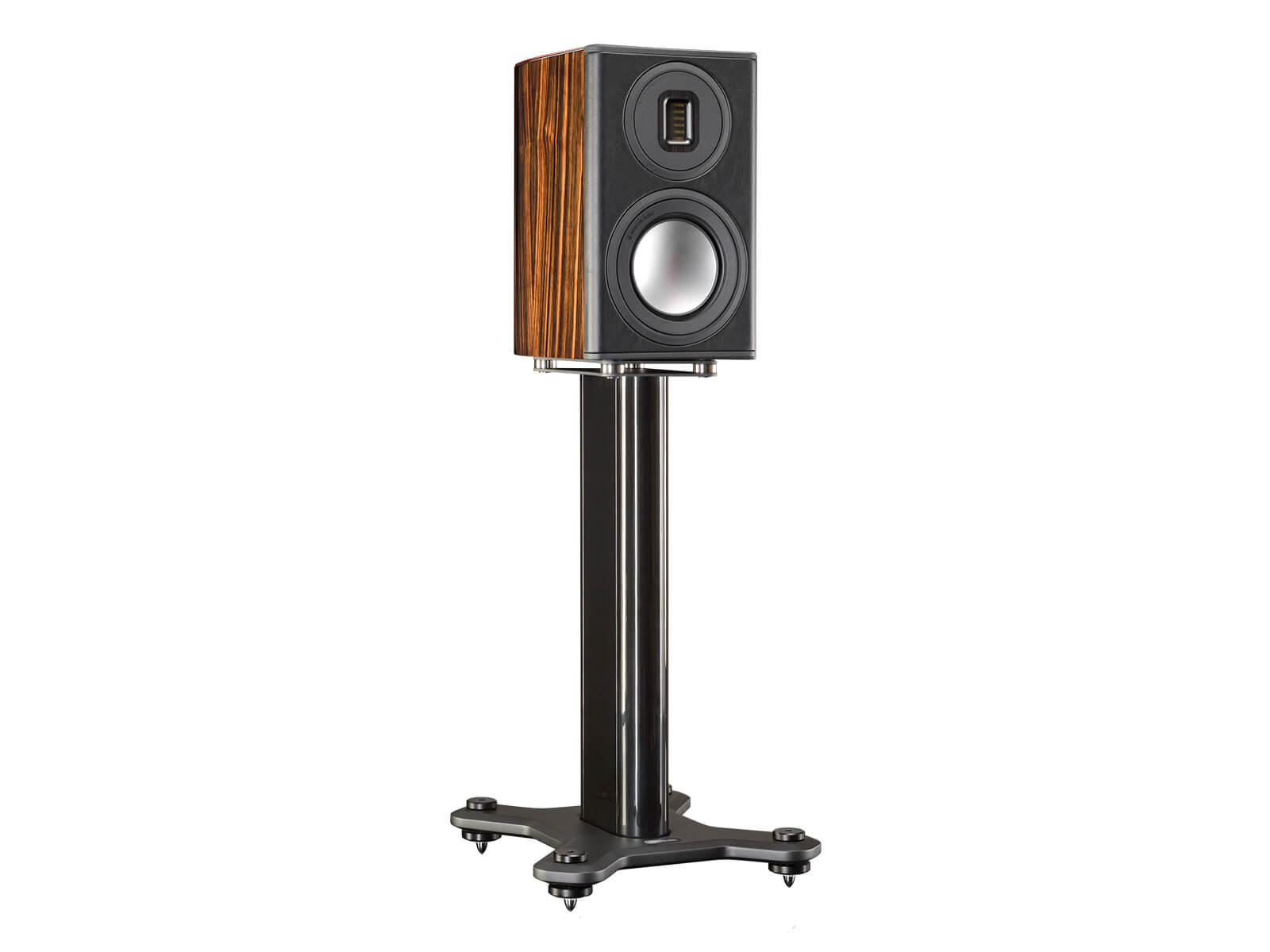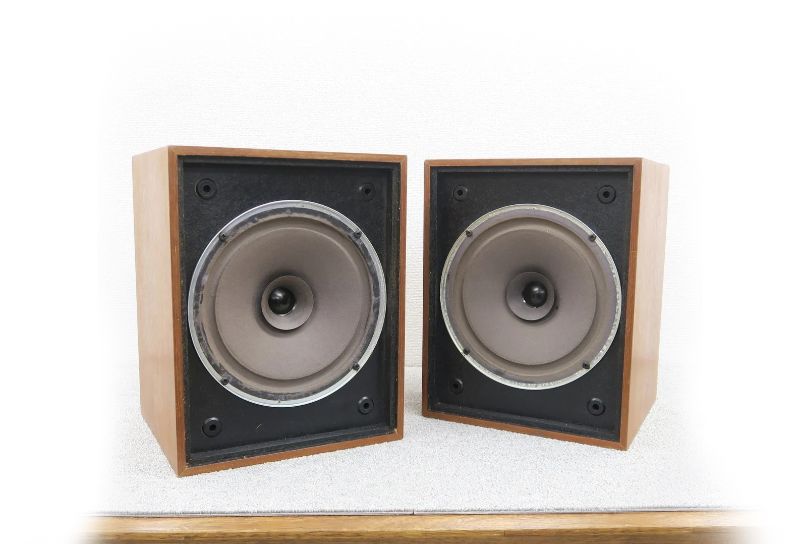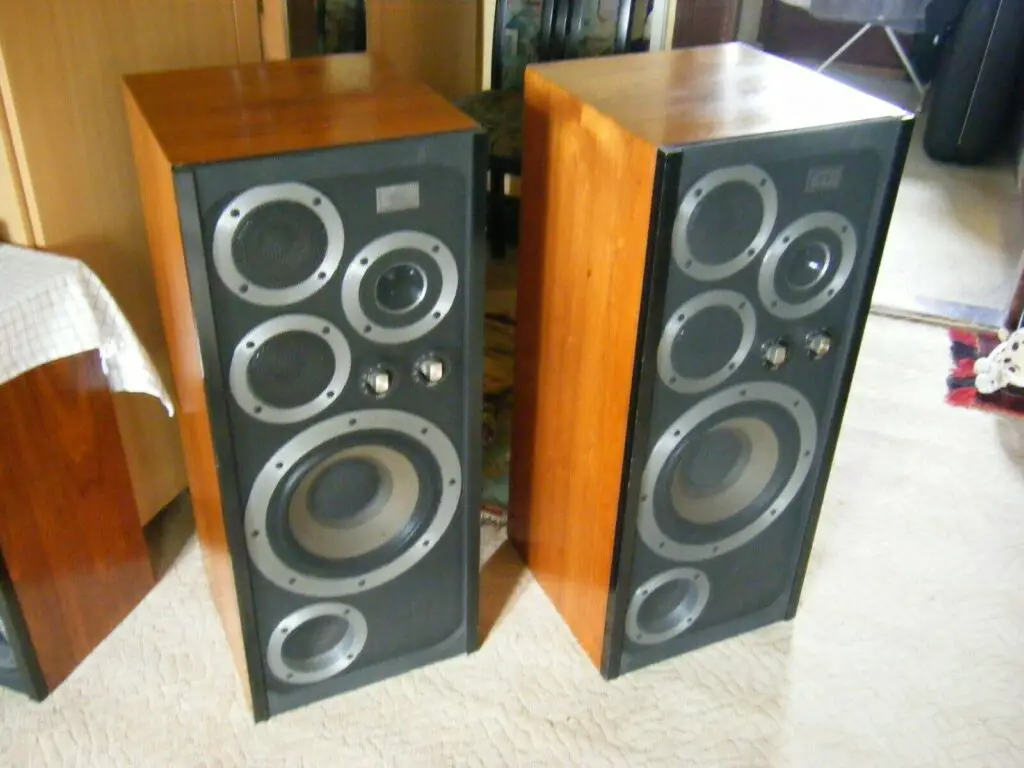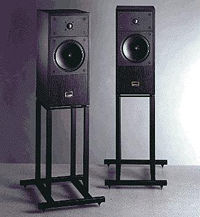Monitor Audio should be commended for using ribbon tweeters in its flagship Platinum series, which debuted in 2007. A very good ceramic coated aluminium/magnesium ribbon HF unit rode shotgun with a single 6.5 inch Rigid Diaphragm Technology bass-mid driver on the PL100, which cost £2,300. The heft of a traditional dome tweeter, according to designer Dean Hartley, is a concern since it limits both speed and total bandwidth. “The ribbon tweeter has no voice coil or suspension mass,” he explained, “and the moving mass in this case is the same as the ribbon mass, which is 18mg.”
This worked down to 2.5kHz, when it switched to the mid/bass driver – the crossover uses specially built metalized polypropylene film capacitors that are graded to a 1% tolerance. Internal wiring was pure silver, and air cored inductors provided low distortion. “A new in house development which we call RDT, made from bonding very thin skins (40uM thick) of C-CAM alloy to a Nomex honeycomb core,” Hartley added of the mid/bass driver. This creates a laminated sandwich structure that is extremely robust. The unbroken surface of the concave shape ensures a smooth reaction. The voice coil drives RDT cones directly, with no dust cap or joints to obstruct the driver reaction.”
The PL100 was very well-made and constructed, even by mid-nineties standards. The exotic, hand-selected Santos Rosewood and Ebony natural wood veneers were covered in eleven coats of lacquer on the wonderfully carved, strongly braced cabinets, while the front baffles pleased with their plush Strathspey leather upholstery. Multiple laminations of wood veneers contoured to make a sturdy plywood shell, uneven internal sides to counter internal standing waves, and rigid ‘Pin-hole’ style bracing to provide further rigidity were used in the cabinet. To further tune out any resonance, tie-bolts were put into the brace from the rear and front of the cabinet, tightened to a specified torque, and Bitumen interior sound deadening material was applied to all internal walls. An ‘anti-resonance composite,’ a thermo-set composite resin with organic fillers, was used for the front baffle. “It has a high degree of structural rigidity and damping qualities, as well as being acoustically great,” Hartley said.
It’s a unique-sounding loudspeaker in that it avoids many of the flaws that plague other competitors. It stands out from other dome tweeters thanks to its gorgeous ribbon, which provides an unrestricted, open view of what’s going on in the upper midband and treble. Any dome tweeter, with the exception of some ultra-light Beryllium domes, sounds fuzzy and sat-upon in contrast. The PL100 provides an outstanding sense of space, transporting you right into the recording.
This tiny speaker has such a rapid sound, and it’s beautifully textured and timed with breathtaking precision, making a song zip along when it would plod on inferior loudspeakers. Thankfully, the mid/bass sections are well-integrated enough to keep up, giving low frequencies a marvelously propelling gait. In absolute terms, the mid/bass unit trails the tweeters by a fraction of a second — no cones can move in and out as quickly as gossamer-thin ribbons, and the ported cabinets produce very minor time-smear, as any infinite baffle enthusiast can tell you. Nonetheless, they’re outstanding for the price and in the grand scheme of things for mid-budget loudspeakers. I can think of few finer tiny boxes at the price – and I never weary of that distinctly warm, sweet, and slimline sound when properly set up and matched to a smooth, open source and amplifier.







